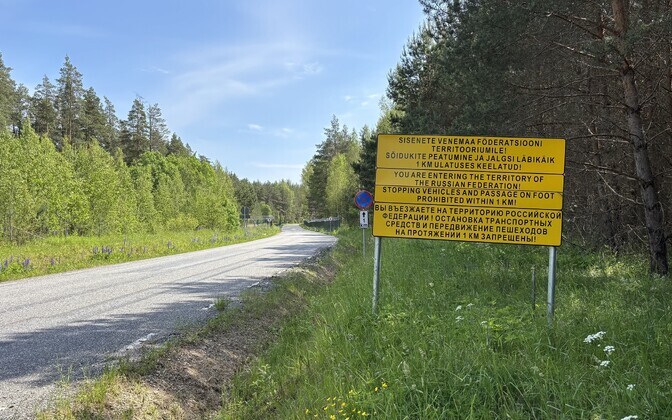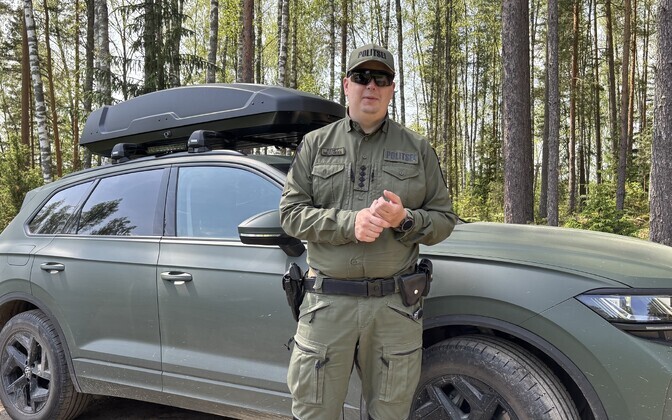In Estonia’s south east, border guards are struggling with holidaymakers who ignore the road signs and stop their vehicles to take photos in the Saatse Boot, where the road crosses into Russian territory. Awareness among Estonian tourists has increased over the years, however, the main concern is with foreign tourists, for whom the colorful and abundant road signs seem to be more of an invitation than a deterrent.
The highway crosses into the territory of Russian Federation on two occasions. The small “boot” does so for a distance of 30 meters and the big boot for 1 kilometer.
However, the biggest problem for the border guards in the summer months is that tourists drive past Saatse, stop their vehicles, get out and take photos. While the signs are colorful, the wire fences are impressive, taking a phot can end up costing between €80 and €200 in fines.
“It’s more out of curiosity that people want to take pictures of the Estonian border sign or the Russian border sign, because it’s right here on the road,” said Renet Merdikes, head of the PPA’s Saatse branch.
The majority of offences are committed at the small border crossing, even though a multilingual information board is in place to inform road users about entering the territory of a foreign country along with unambiguous road signs.
“It’s such an interesting place, but you have to be very careful because there are lots of signs. At the same time, you also have to bear in mind that it is the territory of another country where the road crosses. Tourists inside Estonia are actually more aware anyway. They know how to look at these things better and have been here more. Rather, the problem is that when tourists have come from abroad, this information may not always reach them,” Merdikes said.
 Warning sign in Saatse. Source: Mirjam Mõttus/ERR
Warning sign in Saatse. Source: Mirjam Mõttus/ERR
Last year, the PPA recorded almost 40 violations in Saatse. This year there have been 4 so far. However, in most cases the statistics only account for warnings and explanations.
“These cases do not really reflect everything that is happening here. People are starting to slow down and, where necessary, we talk to people to explain that there are these kinds of restrictions here. You have to think about the fact that this is still another country’s territory and we all know what that other country is,” Merdikes explained.
“It is good if we react and get hold of people, so to speak. A worse scenario would be if people walked across the border and the border guards of the Russian Federation picked them up. In that case, we would not know what exactly they would do with these people, where they take them and how long they would detain them. It’s always worth thinking about that when you’re here near the Russian border,” he added.
—
Follow ERR News on Facebook, Bluesky and X and never miss an update!
